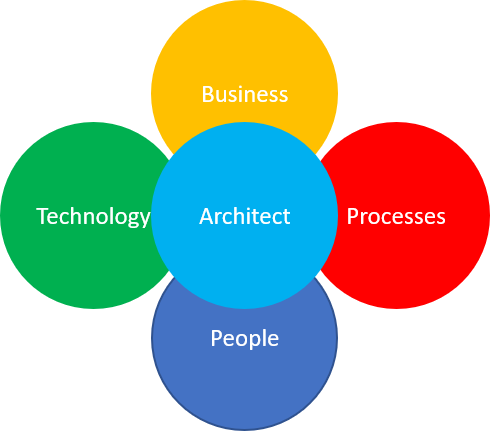During my career, I’ve seen various architects: Business-architects, IT-architects, Enterprise-architects. From a distance, IT architect has always seemed a great position to me, because it holds the best of worlds. For starters, you have to be curious and a great listener. You have to listen to management, users and the market. Opposite to this, you have to be curious for new technologies, possibilities and trends. You have to invest time visiting seminars, reading up on tech blogs and have a broad overview of various companies. In addition to these qualities, you should have the ability to match different angles, requests and requirements from all stakeholders and develop an IT strategy supporting the business strategy. A daunting task, to say the least.
Adding even more strain to this job, IT cycles are short nowadays: strategy and technology are challenged on a 1 – 2,3 year basis, rather than 4 – 5 years it used to be. This makes the job of an IT architect harder and it makes architects invaluable prior to major changes, rather than during changes.
Let’s take the migration of a traditional workspace to a digital, modern, always on workspace. Your business will state requirements, as will your users. Management will want a high-end solution to all problems at lowest costs. Consultants and administrators want to implement the latest technology. Architects should be the spider in this web, combining all points of view, requirements, use cases and technical possibilities, making the solution spot on for the company.
If this isn’t enough, they should also consider what impact a change has on people and processes: because technology is moving fast and due to its complexity, different skills might be required from your teams and processes will change due to automation and self-service. In all of our projects, we’ve noticed paying attention to people and processes is a necessary step to take, but also one who gets forgotten to easily. Instead, projects focus on the technical implementation of a product or solution.
However, we’ve developed a practice at the very start of disruptive changes, focusing on people, processes and technology, by aligning all stakeholders, use cases, and requirements, so everybody is on the same page, including your business. Every stakeholder has to put in attention at the beginning of a project: executives, CTO’s, users, etc. Especially architects can help to align requirements, make them SMART and make sure the IT strategy matches the business strategy.
Interested how we can assist? Feel free to contact me.



